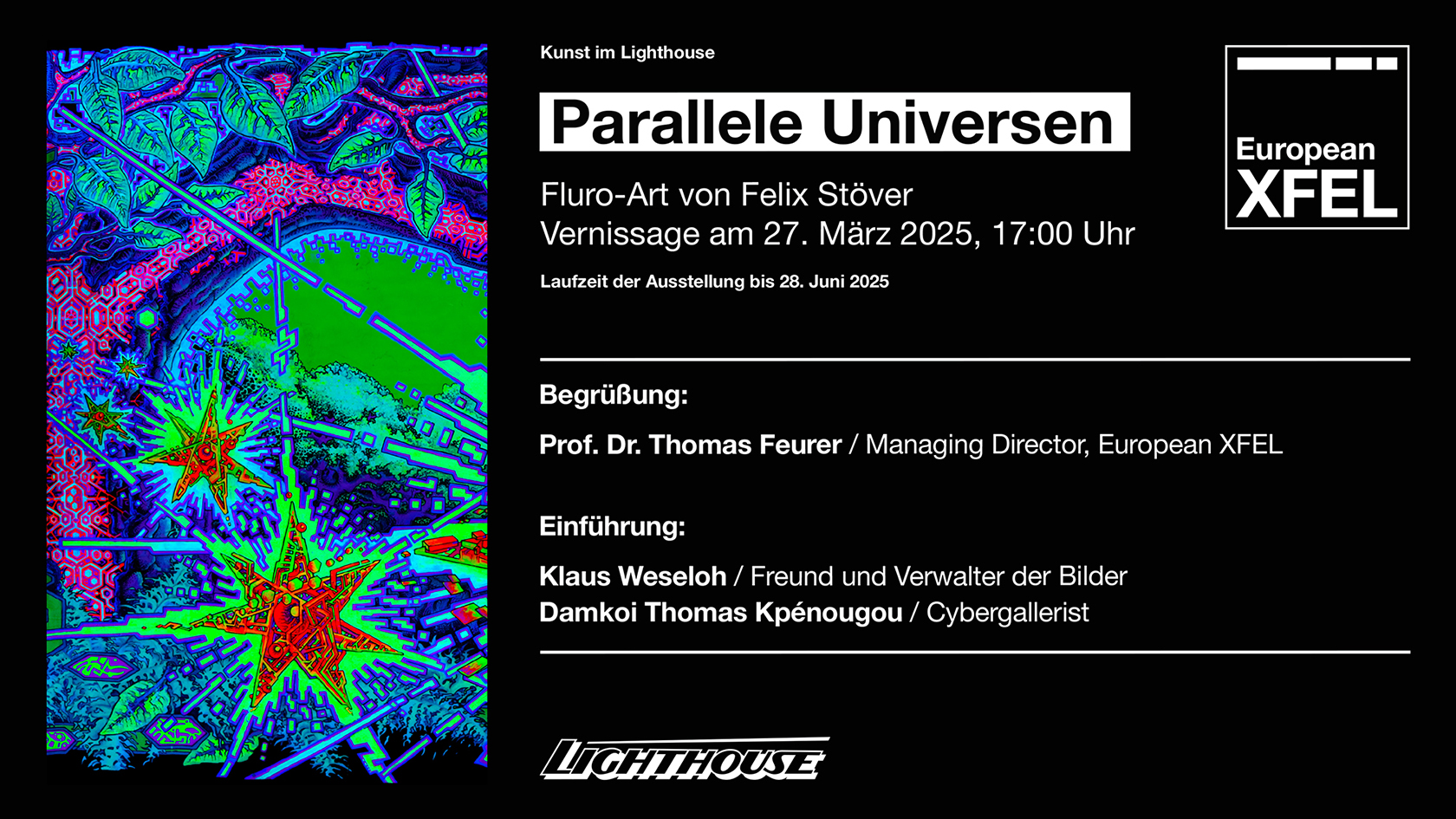
The use of light to create atmosphere, spatiality or emotions is a deeply rooted tradition in the history of art. Light also forms the central component of Felix Stöver's artistic concept.
His luminous works of art form a bridge between the visible and the invisible, the earthly and the spiritual. The interplay of light and dark symbolises the dualities with which Felix wrestled: life and death, suffering and peace, the earthly and the spiritual.
A central aspect of Stöver's art is his relationship to the natural sciences. Stöver had studied physics in Hamburg and saw nature as his most important source of inspiration. In his diploma thesis, which he wrote at the Deutsches Elektronen-Synchrotron DESY, he quotes the Greek philosopher Democritus (5th century BC) with the words "Only apparently does a thing have a colour, only apparently is it sweet or bitter; in reality there are only atoms and empty space."
Stöver found a balance between mathematical clarity and the open space for imagination and developed a fascination for the colours and forms of nature.
It all started with his comic books, which he sold in scene venues and through which he made a name for himself. The emerging psytrance scene with its intense colours, hypnotic beats and experimental visual forms of expression inspired Stöver and led to his intensive work with fluorescent and phosphorescent colours. He designed numerous album covers and worked closely with musicians and event organisers.
Stöver quickly made a name for himself in the psytrance scene. His pictures became an integral part of international festivals all over the world. His art was not seen as mere decoration, but as an integral part of the collective experience. The bright colours and abstract patterns enhanced the transcendent nature of the music.
For him, the use of fluorescent and phosphorescent colours was not just an aesthetic experiment, but an expression of a philosophical and spiritual discourse on light, energy and the invisible connections between man, nature and technology.
The precision and geometric clarity reflected in the cubist elements of his paintings are in an exciting dialogue with the untamed, often chaotic shapes and colours of his surreal landscapes. It is not unusual for viewers to only be able to grasp the complexity of the paintings at second or third glance. Although the paintings often appear inconspicuous in daylight, the pigments develop a radiant luminosity under black light.
His paintings also react to changes in their surroundings. Even slight variations in the position or intensity of the light can significantly change the perception of the image. This sensitivity to light is an integral part of the emotional and aesthetic experience of Stöver's art.
Yet the dark tones never overpower the light. Rather, they harmonise with the bright colours and reflect Felix's conviction that light and hope exist even in the darkest moments.
Fluorescence and phosphorescence:
The discovery of fluorescence and phosphorescence - the phenomenon that certain chemical substances absorb ultraviolet light and convert it into visible light with a greater or lesser time delay - was initially primarily relevant in scientific and industrial contexts. While the emission of fluorescence ends immediately as soon as the light source is removed, phosphorescent materials store the absorbed energy and emit it with a delay over a longer period of time. This means that works of art can continue to glow, creating an additional temporal dimension.
Fluorescence is used in the natural sciences, for example, to track the presence and movement of cells or proteins in biological systems.
Life data:
Felix Stöver was born on 23 March 1972 in Lüneburg and grew up in Apensen near Buxtehude in northern Germany. He died on 3 November 2010 at the age of just 38.











